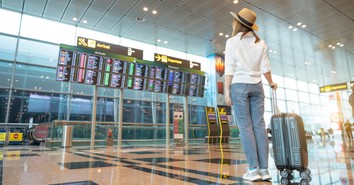Are We Overprotecting Our Children?

EDITOR'S NOTE: Enjoy this article from Home School Enrichment Magazine? Right now, get a FREE subscription to the HSE Digital Edition by visiting www.hsemagazine.com/digital/
Every parent wants his or her child to grow into an independent, self-sufficient, and wise adult. This desire is counterbalanced by the need to protect our children from life’s many dangers. We worry that we are protecting them to the point of stifling them or that we are letting them freely roam to the point of neglect. We see a parent who lets his child run to the store alone and we ask, “Am I overprotective?” Another parent attends all of her son’s lessons and practices with him, and we think, “Maybe I’m not cautious enough.”
And we wonder: How do we teach our children to be independent without endangering them in the process? How do we know when they are ready to take the small steps away from our side which will ultimately lead them to a life of their own? In this world of dangers, how can we teach them to be free without putting them in peril?
First of all, we need to realize that no matter what precautions we take, there will always be danger. We cannot and should not live in fear and worry. We must relinquish our worries to the Lord, pray, and trust Him to give us and our children protection and good sense. I recently read an article on eagles. I was truly struck by the section detailing the training of the eaglets to fly.
“The mother eagle throws the eaglets out of the nest and because they are scared, they jump into the nest again. Next, she throws them out and then takes off the soft layers of the nest, leaving the thorns bare. When the scared eaglets jump into the nest again, they are pricked by thorns. Shrieking and bleeding they jump out again.” (Dr. Myles Monroe, 7 Principles of an Eagle)
Several years ago a pair of mourning doves built their nest in one of the hanging baskets directly outside our dining room window. We had fun peeking at the two eggs and then at the fluffy babies. (I’m sure our house looked odd from the street, with three lush hanging baskets and a fourth that was dry as a stick with an assortment of children peering into it on a regular basis.)
One day, we noticed an unusual amount of activity coming from the nest. I called for the kids, and we watched in wonder as the two little birds were taught to fly. The mother and father flew from the nest, closely flanking one baby bird. The baby teetered at the edge of the nest for just a moment before trusting his parents and flinging himself out into the air beside them. The three flew in a small circle and soon returned the baby to the nest. They repeated this exercise several times, going farther afield, always staying one on either side of their baby, watching and guiding. By the next day the babies were leaving the nest for short periods on their own.
These birds serve as a graphic illustration of how our parenting can be. I don’t want to be the eagle, throwing the eaglet from the nest when I think the time is right. Like the mourning dove, I want to guide my children to increasing independence so that one day I can wait in the nest as they make that first solo flight, and I will know that they are prepared for it and will do it well.
A great deal is currently being said against overprotective parenting. People say to let kids go, remove the boundaries, allow them to take risks. A member of our local homeschooling group forwarded on an article regarding this topic. The author told how she had allowed her 9-year-old son to ride the New York City subway and bus alone. She took him into town, gave him some maps and money, and went home to wait for him. I am truly glad that her 9-year-old made it home safe and whole. I also think that her action was a bit like throwing the eaglet from the nest.
This article struck a chord in our group, and extended discussion ensued. I started pondering the subject of how closely our children should be guarded. We can have such fear of our children coming to harm that often we do not give them the opportunity for independence. We need to provide our children with these opportunities; we need to prepare our children for them as well.
I hate to say it, but I think that most kids have inherently poor judgment. My boys get stuck in trees on a semi-regular basis. Just this evening, my 5-year-old handcuffed his feet together and had no idea where the handcuff key might be. Good judgment is not inborn; it must be modeled and taught.
Children are also very trusting. I remember when, as a child, a man tried to get me into his car. I walked right up to him to try to hear what he was saying. I knew all about strangers, but when actually faced with a true predator, I thought he was just a guy in need of directions.
It can be so hard to teach our children of the dangers in the world. We want to protect their innocence and preserve their trust. We need to be sure they know that most people are good, but because a few are not, they must be careful.
It is more than possible to give your kids freedom without leaving them alone in New York. Like the mourning dove, start small and build up; guide them to that independence. I’ll be the first to admit: the eagle’s way is easier. Guiding children to independence requires much thought and effort. You need to plan for the independence. You have to model decision making. You think aloud so that your children can follow your reasoning. Whenever possible, you give them many real choices that grow in importance as they mature.
My friend Linda said it well: “In order for them to develop and learn good judgment, we need to give them opportunities to make decisions—when the impact of a bad decision isn’t great.” So start by letting them help you with something, then try letting them do it on their own while you are nearby. Finally, allow them to do it without you.
For example: My children love to ride their bikes. I am not an eagle; I did not send them outside one afternoon with their bikes and then go back inside to take a nap while they figured out biking. Rather, I taught them to ride a two-wheeler, first on a grassy hill, then on pavement. I taught them basic bike safety and provided them with helmets. Next, I rode alongside them. I taught them the boundaries. Now I allow them to bike in our neighborhood without me, taking along a walkie-talkie so they can reach me if need be.
This method of training is not foolproof, of course. I model cooking for my children, then let them make the item with my help, and finally let them try it solo. My 9- and 8-year-olds both burned their fingers on their first solo attempts at baking unassisted. They also forgot to grease the pan and fed the family somewhat raw cinnamon rolls for breakfast. Their immense pride at providing us with breakfast far outweighed these little setbacks.
I would rather eat the occasional raw pastry, patch skinned knees, or climb a tree to rescue someone than stifle my children needlessly. We as homeschoolers have so much opportunity to give our children freedoms that other kids might not have. We don’t need to structure every moment of their days, from putting them on a bus at 7:30 in the morning to finishing their homework at 9:00 p.m., just in time for a good-night kiss. Whenever possible, become a “yes girl.” “Yes, you can build your own fire pit in the backyard.” “Yes, you can cook those carrots and grapes on a fork over the campfire.” “Yes, you can keep a container of worms in the refrigerator.” That way, when you need to say “No, you cannot ride the New York subway alone,” your child does not feel stifled; he feels protected.
When determining where to start in teaching independence, consider where your children are and where they would like to be (or where you would like them to be). Every child has a different desire for independence. It could be staying home alone, starting the fire in the fireplace, babysitting, or sleeping out in a tent. Some things children simply will not be able to do, but select the ones they can and work toward them. By building up with small freedoms, we can be sure that our children’s judgment and responsibility are developing so that someday they will be able to take a New York Subway, and we won’t have to worry.
Published on June 15, 2009.
Rachael Varblow and her husband, Matt, have homeschooled their children since 2003. They have three lively boys (Sean, 10, James, 8, and Joseph, 6), as well as a baby girl, Katherine, to keep life busy and exciting, besides offering inspiration for most of Rachael’s writing. When she has a spare minute, Rachael enjoys sewing, working in the garden, and writing.
Originally published in the May/Jun ’09 issue of Home School Enrichment Magazine.
Originally published June 15, 2009.







